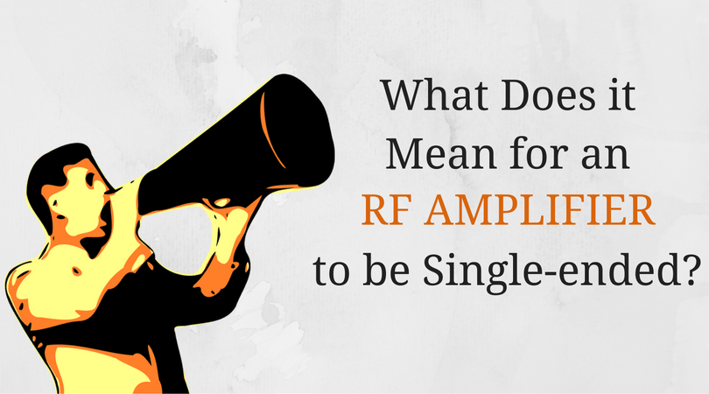
"Hello?
It's me!
Can you hear me?!"
If you're an electrical engineer and familiar with the musical artist Adele's most recent single, "Hello", you may have thought to yourself, "Man, sounds like she could really use a good quality amplifier!"
Speaking of amplifiers, that's this week's topic of choice. More specifically, single-ended radio frequency amplifiers.
In this post, you'll learn all about RF amplifiers, how they compare to single-ended amplifiers, and advantages and disadvantages of single-ended amps. Let's make sure you have a solid understanding of RF amplifiers, first.
What is an RF Amplifier?
A radio frequency power amplifier is a form of an electronic device which is mainly used for the conversion of signals that have a low power into signals of higher power. A radio frequency amplifier is constructed specifically to deal with gain, heat loss, as well as input and output impedance matching.
Today, amplifiers operate in different kinds of modes, which are also known as classes, in order to perform their function in a satisfactory manner. Solid state devices (also known as SSPAs or Solid State Power Amplifiers) are used to make modern radio frequency amplifiers even better and more efficient in terms of signal conversion.
Breaking Down the Individual Components
A radio frequency amplifier is composed of the following three basic blocks:
- Power Supply - The main purpose of the power supply is to convert alternating current into direct current. This is a necessary part of the device since the semiconductor devices that are present within the equipment require direct current to operate. It may also be helpful for you to understand The Secret to Overcoming the Power Supply Rejection Ratio (PSRR).
- Input Stage - This is the part of the device where the input signals are received and subjected to amplification by the output stage.
- Output Stage - At this stage, the weak input signal is converted into a high-powered replica. This portion of the device uses a number of high power transistors and is responsible for generating the most amount of heat by the amplifier.
Using a Radio Frequency Amplifier
Radio frequency amplifiers are primarily used to drive another source of high power. They are also used to drive a transmitting antenna and for exciting microwave cavity resonators. This technology is useful for voice and data communication and for weather sensing by using radar.
What Single-ended Amplifiers Do
When a radio frequency amplifier is single-ended, that means that half of the input wave has been amplified. What this means is that a portion of the wave is rectified and filtered into a low distortion waveform that carries the pattern of a sine wave. A filter is used that matches the impedance offered by the output of the amplification device as well as the load.
What this does is that it creates an amplifier with a low distortion as well as lower costs. However, for this kind of device to work the output filter and the matching network need to be fairly high. If the bandwidth is low, it needs to be returned for a frequently changing operating frequency. While this makes no difference for broadcasting purposes, it can cause inconveniences for amateur radio hobbyists.
Advantages
- Having a single ended output stage allows for an asymmetrical transfer function. This means that even-order harmonics in the distortion that is produced have less chance of canceling out. For tubes, distortion takes the form of second order harmonics from the square law transfer characteristic. This can result in a warmer sound that is more pleasant to hear.
- It is generally more cost-effective to use single-ended radio frequency amplifiers, a consideration that often plays a major part in deciding which amplifier to use.
Some Disadvantages
- They do not offer very high efficiency and thus are rarely used for high power designs that require greater amounts of signal conversion at faster rates.
- Due to the fact that the device is half on even when sitting idle, a lot of power dissipation occurs through the radio frequency amplifier when it is single-ended.
Thus we see that single-ended RF amplifiers can be quite useful for low-end work during the process of signal amplification but are of limited use for the purpose of high-end data signal conversion.
What are your thoughts?
Have you had experiences with single-ended amplifiers or have additional input? Leave us a comment! We always enjoy hearing from you.






